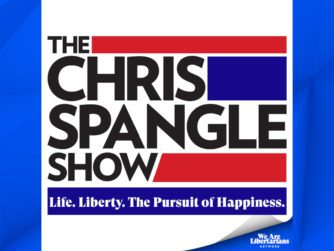Amid all the recent buzz in the media surrounding the nomination of former two term New Mexico Governor Gary Johnson at last weekend’s Libertarian National Convention, one cannot but imagine what a Libertarian Presidency look like? What policy initiatives would a President Johnson begin with in his first 100 days
Why his first 100 days?
The 100 day standard is a standard for gauging presidential effectiveness. The truth is that presidents tend to be most effective when they first take office because their leadership style seems fresh and new. The results of victory are an enhanced aura of power for Presidents which makes their impact on Congress at its height. The 100 day term was coined in a July 24, 1933, radio address by U.S. President Franklin D. Roosevelt, although he was referring to the 100 day session of the 73rd United States Congress between March 9 and June 17, rather than the first 100 days of his administration.
Since Roosevelt’s coining of the term, those Presidents who came after him have tried to leverage their electoral success into political capital allowing them to usher in the legislative and policy reforms they ran upon. In considering a President Johnson’s first 100 days, let us look back at what policy initiatives Roosevelt ushered in with his electoral mandate…
FDR’s inaugural address promised a war against the Great Depression, and he indeed moved quickly upon entering office. He began by declaring a nationwide banking holiday from March 6–10, 1933, and halted all gold transactions in order to open the banks on a sounder basis. He then called a Democrat-dominated and very green Congress into special session.
Congress members stayed at their task from March 9 through June 16 in a session dubbed “the Hundred Days” and passed much of the legislation that formed the New Deal. Legislation passed during the New Deal era had three often conflicting or obstructing goals: Relief, Recovery, and Reform.
Legislation Passed in the First 100 Days
- The goal of the legislation adopted during FDR’s first 100 days was to prevent the recurrence of the boom and bust cycle that had resulted in a severe market correction in the form of a depression.
- The President’s first order of duty was to end the banking crisis, which had forced many of the banks in the country to close and the rest to face severe bank runs. Congress prepared the Emergency Banking Relief Act of 1933 in eight hours, giving the president the authority to regulate banking transactions and reopen solvent banks.
- The Federal Deposit Insurance Corporation to insure individual deposits up to $5,000, a sum which was later raised. This legislation prevented a recurrence of the bank failure epidemic.
- FDR ordered all private gold to be surrendered to the Treasury for paper, and took the nation off the gold standard. Roosevelt also reduced the value of the gold content of the dollar to sixty cents, theorizing that changing the value of the currency would stimulate business through controlled inflation.
- Congress passed the Agricultural Adjustment Act on March 16 whose aim was to restore the income of farmers by reducing surpluses. A tax on processors to fund subsidies for farmers who limited their acreage. The thinking by the President’s economic advisers was that if they limited supply, they would easily be able to drive up the price of crops in order to raise the income of farmers.
- On March 21, the Civilian Conservation Corps was created, putting over 250,000 young men to work on conservation projects under the guidance of the Army. Also on March 21, the Federal Emergency Relief Administration was created and allotted over three billion dollars in direct dole payments or wages for work to the States.
- April 10, 1933, saw the creation of the Tennessee Valley Authority which Congress created as a development project bringing low-cost electric power, along with employment, housing, restoration of eroded soil, and reforestation, to a desperately poverty-stricken area.
- National Industry Recovery Act, which was meant to help labor, industry, and the unemployed. The bill was finally passed on June 16, 1933. The bill called for individual industries to write up codes of fair competition, decided maximum hours of labor per person, and introduced minimum wages in order to spread work among the greatest number of people.
However, the NRA called for both labor and industry to give up too much in order to guarantee their success, and businesses that placed the blue eagle in their windows would often secretly violate the codes. The Supreme Court later declared the codes unconstitutional in the Schecter decision.
What legislation and policies would President Johnson usher in?
President Johnson would most likely face a Republican House of Representatives led by Speaker of the House: Paul Ryan, and a Senate who, according to most projections, be split 51-49 or 52-48. It is currently too close to call which party will have the majority in the Senate, but given the near even split, any legislative reforms will require a great deal of compromise.
Luckily, President Johnson’s libertarian philosophy offers him a rare opportunity to utilize a “give and take” approach in pursuing legislation.
One of the major drivers of legislative gridlock is the inability of the two major parties to find overlap in the type of comprehensive reforms voters are asking for. President Johnson would have no such problem as a representative of the Libertarian Party.
The Agenda
The American Economic Revitalization and Individual Empowerment Act
Tax Reform
- The elimination of a tax code that is more than 70,000 pages long enforced by a government agency with almost 100,000 employees
- 23% national sales tax while eliminating the IRS elimination of tax subsidies
- Get rid of income tax and capital-gains tax
- Reduce state personal income tax from 8.5% to 8%
- Replace payroll taxes with a single consumption tax
- Taxes on purchases for basic necessities would be “prebated”, with all other purchases taxed equally regardless of income, status or purpose
Criminal Justice Reform
- Formal Proclamation announcing the End of The War on Drugs
- Repeal of Mandatory Minimum Sentencing
- Drug Decriminalization
- Reallocation of funds for those imprisoned for victimless drug related crimes to rehabilitation and community re-entry relating to housing and career placement
The American Civil Liberties Defense and National Debt Elimination Act
Civil Liberties Reform:
- Full Pardon for Edward Snowden
- Repeal of 2015 Cyber Security Act
- Passage of the Fourth Amendment Restoration Act: A proposed bill introduced by Senator Rand Paul on June 7, 2013. It “provides that the Fourth Amendment to the Constitution shall not be construed to allow any U.S. government agency to search the phone records of Americans without a warrant based on probable cause.”
- Passage of the Amash-Conyers Amendment: a proposal to end the “NSA’s blanket collection of Americans’ telephone records”
- Passage of the NSA Inspector General Act: Which requires the Director of the National Security Agency and the Inspector General of the National Security Agency to be appointed by the President, by and with the advice and consent of the Senate”. Currently, the Inspector General is appointed by the Director of the NSA.
National Debt Reform
- Passage of Senator Rand Paul’s 2015 Budget and National Debt Elimination Plan
- Bring spending near historical average in very first year
- Reduces spending by nearly $4 trillion relative to the President’s budget
- Achieves a $19 billion surplus in FY2016
- Brings all non-military discretionary spending back to FY2008 levels
- Requires the process of entitlement reform, including Social Security and Medicare, with final implementation by FY2016
- Does not change Social Security or Medicare benefits
- Block-grants Medicaid, SCHIP, food stamps, and child nutrition
- Reduces military spending 6 percent in FY2012
- Eliminates four departments:
- Department of Commerce (transfers certain program
- Department of Education (preserves Pell grants)
- Department of Housing and Urban Development
- Department of Energy
- Repeals Obamacare
- Adoption of Balanced Budget Amendment upon repayment of debt and establishes a budget cap limiting federal spending to 17% of GDP
The American Dream Restoration Act: Comprehensive Immigration, Education, and Entitlement Reform
Immigration Reform
- Potential immigrants should be issued a Social Security card, which would allow them to pay taxes.
- Two-year grace period for illegal immigrants to obtain work visas so they can continue contributing to America and begin taking part in American society openly.
- Immigrants eligible to bring their families to the US after demonstrating ability to support them financially.
- Enforce a ‘one strike, you’re out’ rule for immigrants who circumvent the streamlined work visa process.
- Impose and enforce sanctions on employers for noncompliance with immigration laws.
- Streamline the legal work visa process, but not citizenship or a green card. Just a work visa, with a background check and a social security card so that applicable taxes would get paid.
- Share costs of legal immigration between states & federal
- Ensure that the transferred prisoners serve the balance of their state-imposed prison sentence
- Remove any requirement that the prisoner’s consent to be transferred to their countries of origin
- Structure the process to require that the prisoners serve the remainder of their original prison sentence if they return to the United States
- Incentivize countries of origin to take back their criminal citizens.
- Place INS officials in state and local facilities for early identification of potentially deportable aliens – nearer the point of their illegal entry – to ensure formal deportation prior to release
- Upon the request of a state Governor, place INS officers in state courts to assist in the identification of criminal aliens pending criminal prosecution.
Education Reform
- Abolish the federal Department of Education
- Every single student receives a voucher
- The program would be phased-in over four years by income level, so we’ll start out with families at the poverty level and then increase the income limits to where everybody would get a voucher. Students who already are in private schools would get a voucher just the same as students in public schools. They would be phased-in by income, so that the children in private schools who are at the poverty level would be phased-in in Year One.
- Value of the voucher is going to be somewhere in the vicinity of $4,000. Now, the amount of money that we actually spend on a student
Entitlement Reform
- Raise the retirement age to 70 or 72
- Social Security Privatization for those under the age of 45
- Privatization Option for those between 45-62
- Current S.S. System for those already eligible
- Means testing implementation for those who choose the current system but are eligible for the private option (Ages 45-62)
- Change the Social Security escalator from being based on wage growth to inflation
The reality is, America will probably not get the privilege of having a Libertarian President in 2017. However, the tide is moving in the libertarian direction and when you stop to consider the potential legislative impact former Governor Gary Johnson could have on the future of America in his first 100 days…
Just think about what could be accomplished in 8 years?




